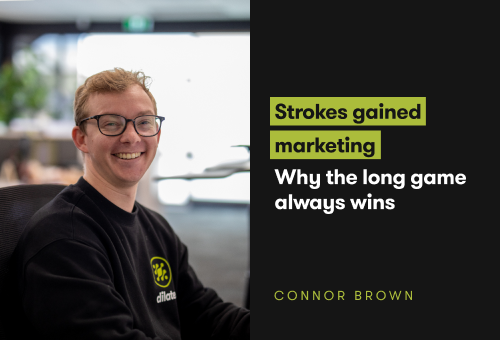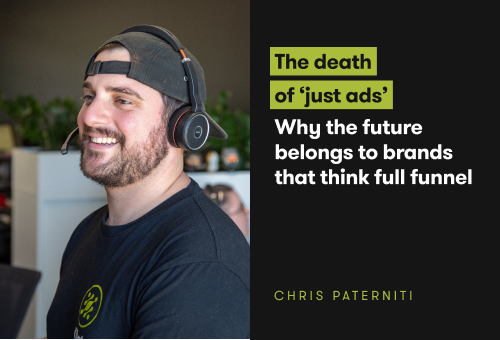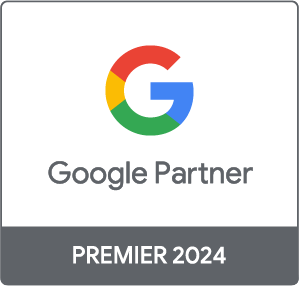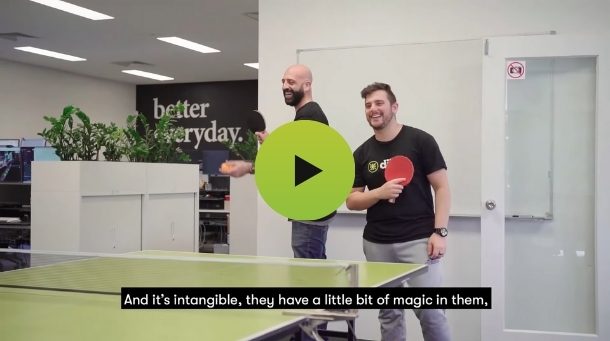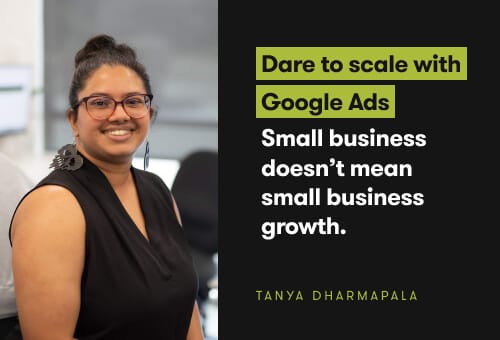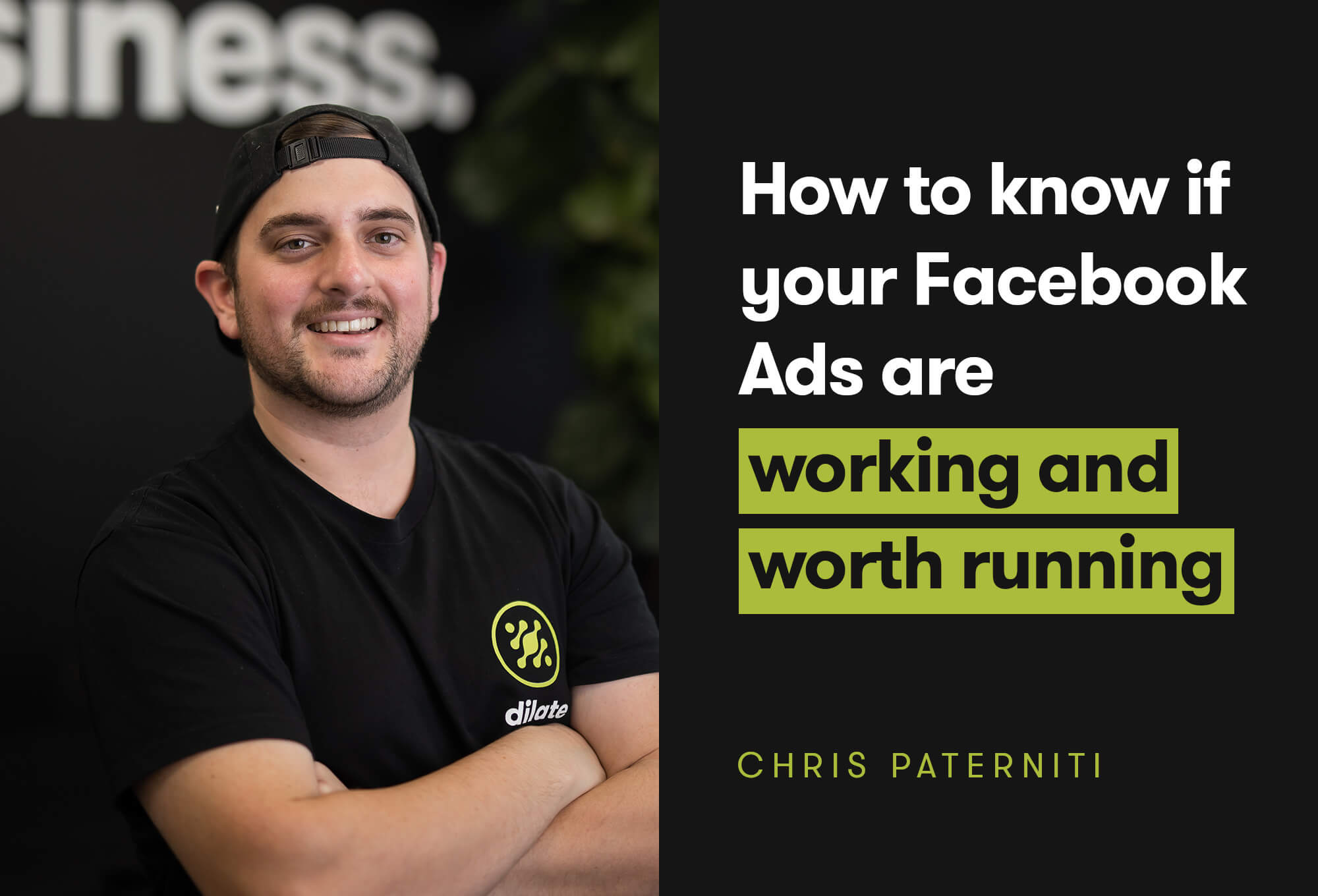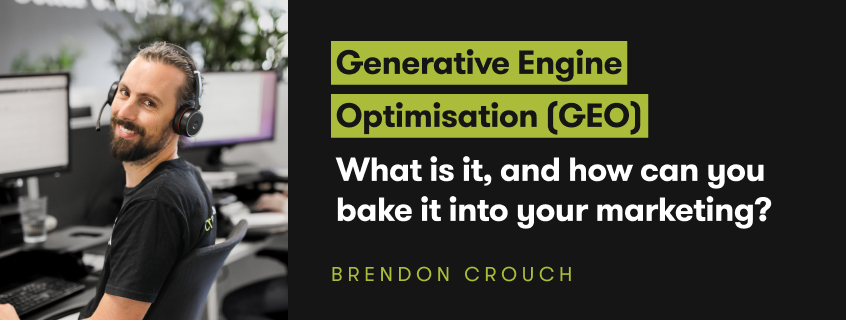
Generative Engine Optimisation (GEO): what is it, and how can you bake it into your marketing?
On any given day, Google, ChatGPT, Gemini, Perplexity (you name it), hand out instant answers before a single blue link can load. If your brand isn’t baked into those AI answers, summaries, and snippets, you’re simply not in the conversation.
Enter, Generative Engine Optimisation, or GEO. Our team have been experimenting, testing, and learning about GEO for some time now, and we’re ready to share what we know.

Next steps
Once you’ve got the fundamentals ticking along—solid content, a healthy brand footprint, real-time tracking—the next step is moving from simply showing up, to owning the space.
When you’re ready to take your GEO up a notch, start thinking about these things:
Personalise your content marketing
Generative AI tries to match answers as closely as it can to intent, and each unique user. And we predict that the more advanced they get, the more personalised an experience each user will receive when using AI tools.
Assets that are tailored to different personas and different stages of the funnel make it crystal-clear who each answer is for, increasing your odds of being served up to the right person, at the right time.
Think in entities, not just keywords
Google and the major AI platforms don’t just look at websites or pages, they look at individual entities (distinct “things” such as your company, each service, your CEO and even individual staff members) and how they relate—much more like a human would.
The clearer those entities are, the easier it is for AI to connect the dots and surface you.
Start by mapping every entity relevant to your company, like brand, services, products, key people, then give each a consistent, structured profile on your site and across authoritative platforms like LinkedIn. Cross-link those profiles and keep them active with fresh media quotes and thought-leadership pieces, so generative engines can clearly connect the dots and choose you as the trusted source.
Layer in rich media
AI doesn’t just read; it watches, listens and references.
Unique visuals and video give language models proof that the insight is yours, more valuable, and a reason to quote you over anyone else.
Take the time to invest in filming podcasts and expert interviews, creating downloadable resources and visually engaging infographics. Then repurpose those assets in your blog articles, social media, and any platform where your audience (and AI) spend their time.
The more original media you seed, the more ways AI has to surface (and trust) your expertise. Remember, the goal is to make your brand a one-of-a-kind source worth citing.
Optimise & update regularly
Generative models learn on rolling data sets, so what earned you a citation last month can vanish after the next re-train.
Make GEO a living experiment. Schedule routine audits, monthly for high-stakes pages, quarterly for the rest, to refresh stats, sharpen headlines, add new citations and embed richer media.
Those steady tweaks keep your assets aligned with the latest model behaviour and stop your share of AI voice from drifting.
Ready to put GEO to work?
Search has flipped on its head, and GEO is now the thread that keeps your entire organic marketing strategy in sync.
We’ve been fine-tuning these tactics long before the term ‘Generative Engine Optimisation’ was coined, and it’s already baked into every organic strategy we run for our clients.
If you’re keen to learn more about how visible your brand is in AI search, or what more you can do to level up, our team would love to have a chat. Don’t hesitate to reach out, and we’ll make it happen.


